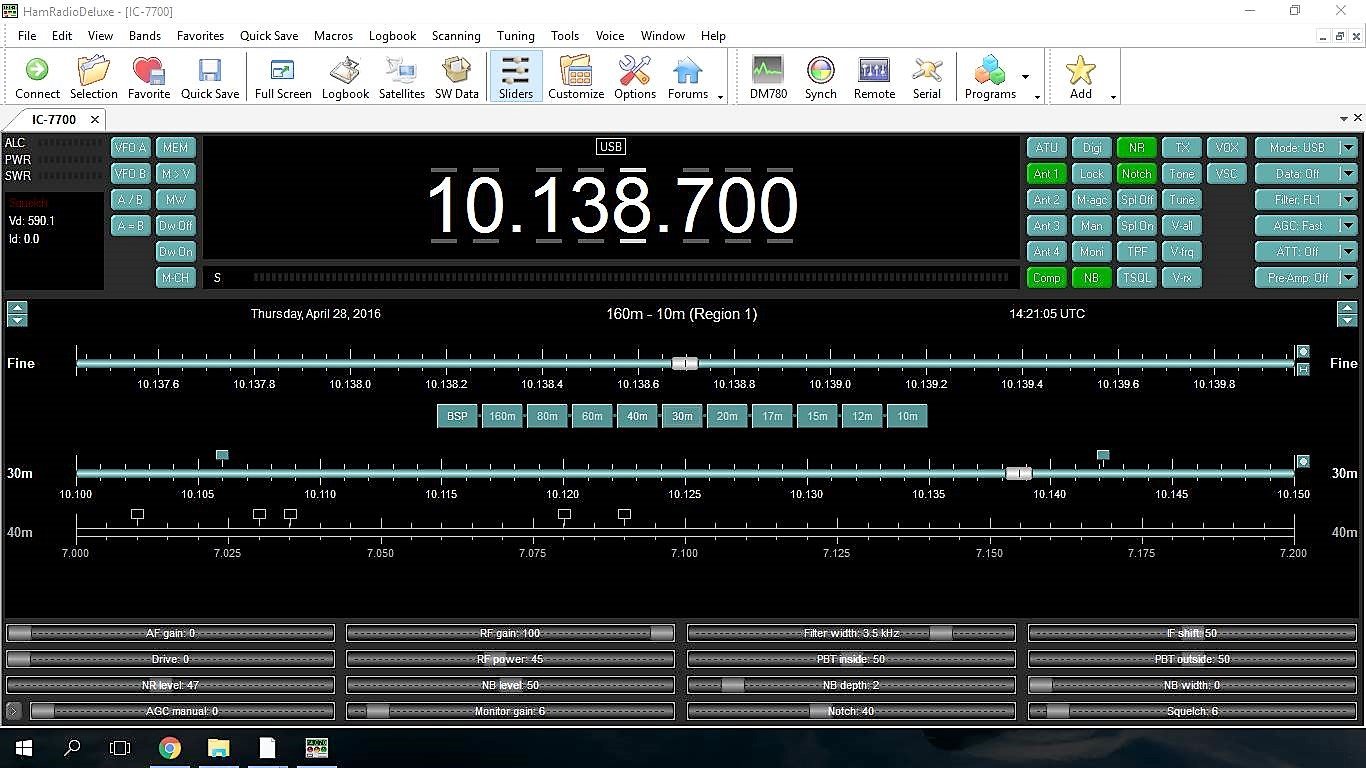Ci V Icom Software Defined

Knowledge Base Article 63AE624429 Issue. CIV / CI 5-Communications Interface-V Reference Manual CI-V (CI-5) Software Instruction Manual. Knowledge Base Article 63AE624429 Issue. CIV / CI 5-Communications Interface-V Reference Manual CI-V (CI-5) Software. The Icom logo is a registered. Knowledge Base Article 63AE624429 Issue. CIV / CI 5-Communications Interface-V Reference Manual CI-V (CI-5) Software. The Icom logo is a registered.
The RS-BA1 allows you to use your ham shack at a distance, whether you are in another room in your home or in another state. As long as you have internet access, you can get on the air. • Low latency provides the same operational experience as using an actual radio plus high quality audio over an IP network. • Most functions and modes of your transceiver, including interference rejection functions and IF filter settings, can be controlled using CI-V commands. • Remote power ON/OFF function wakes up the IC-7600 from standby mode. Interface tailored to Icom transceivers This Icom exclusive software gives you most functions and modes from your Icom transceiver in your ham shack. • Several separate windows for CW keyer settings, voice memory, SSB passband settings for both transmit and receive, and filter settings.

• Slider control or tuning knob control screens are selectable for RF power, CW pitch, RF gain, and SQL and AF level. • Rx Voice recording function. • View the spectrum scope with the waterfall function. It provides a high speed, high resolution spectrum scope equivalent to the main unit (For a single band on only the IC-7851, 7850 and 7300).
Connecting your Icom transceiver The IC-7851, IC-7850, IC-7800 or IC-7700 has a built-in Network function, so only an Ethernet cable is needed. The IC-9100, IC-7600, IC-7410, IC-7300, IC-7200 or IC-7100 can be connected to a PC with a USB cable and the input/output audio signal and CI-V command is sent through the USB cable. The IC-756PROII/III, IC-746PRO, IC-7400 or IC-7000 can be connected to a PC with an audio cable and RS-232C cable through CT-17 CI-V level converter *. *RS-BA1 operation with the Base station's PC connected to the radio's ACC socket, MIC connector, or S/P DIF jack for audio communication cannot be guaranteed. *Depending on your radio, a few functions or modes cannot be used, or you need to update the radio's firmware to operate the CW keyer, using the RS-BA1 Functions compatibility chart IC-7851 IC-7850 IC-7800 IC-7700 IC-7600 IC-7410 IC-9100 IC-7300 IC-7200 IC-7100 Server Function ✔ ✔ Remote Power ON/OFF ✔ ✔ ✔ ✔ ✔ Spectrum Waterfall Scope ✔ ✔ APF AF Level Adjustment ✔ ✔ ✔ CW Keyer ✔ ✔ ✔ ✔ ✔ ✔ Voice Recording/Playback ✔ ✔ ✔ ✔ ✔ ✔ ✔ USB Dial with Optional RC-28 ✔ ✔ ✔ ✔ ✔ ✔ ✔ Depending on your transceiver, some functions or modes cannot be used, or you need to update the transceiver’s firmware. Please use the latest firmware version of the transceiver. Remote Control USB Encoder The optional RC-28 utilizes the same tuning knob and encoder used on Icom HF radios, providing a tactile option for the RS-BA1 software.
The encoder includes a PTT and two user-programmable function keys. The RC-28 is not a standalone control for Icom radios and may only be used with the RS-BA1 software.
• • • 3.1 Adressing Each message (frame) sent to a rig or received from a rig contains two adresses. The destination (to-adress) and the sender (from-adress). Each model has it's own default CI-V adress, which can be changed by the user. If two or more rigs of the same model are used on the bus (or level converter), you need to change the adresses of the rigs, each individual rig must have it's own, distinct adress. Valid adresses as defined in the Icom CI-V Reference Manual (3rd edition) range from $01 to $7F.
With the IC-7000 now (Dec. 2005) at adress $70 that does not leave many adresses for future rigs. I see no reason why adresses up to $EF or even $F9 couldn't be used for rigs, with the exception of $E0 (default Icom controller adress). Values $FA to $FF are reserved for special protocol functions. To-adress is the 3rd byte in a frame, from-adress the 4th byte. Tomtom Renault Europa Karte Firefox.
$FE $FE to-adr fm-adr Cmd Sub Data Data $FD There are some reserved adresses with special meaning: • $00: Used as to-adress, means all connected rigs. Any rig with CI-V Transceive set to on should react to commands adressed to $00. Any rig with CI-V Transceive set to on adresses it's messages to $00 when tuning the dial, changing mode etc. • $E0: Reserved for the controller, i.e. The computer. But to my knowledge no rig really cares where the messages come from, so any adress could be used as from-adress. • $FA $FF: Reserved for protocol functions such as frame delimiters, Ok, Not-Good, collision signals, empty memory etc.